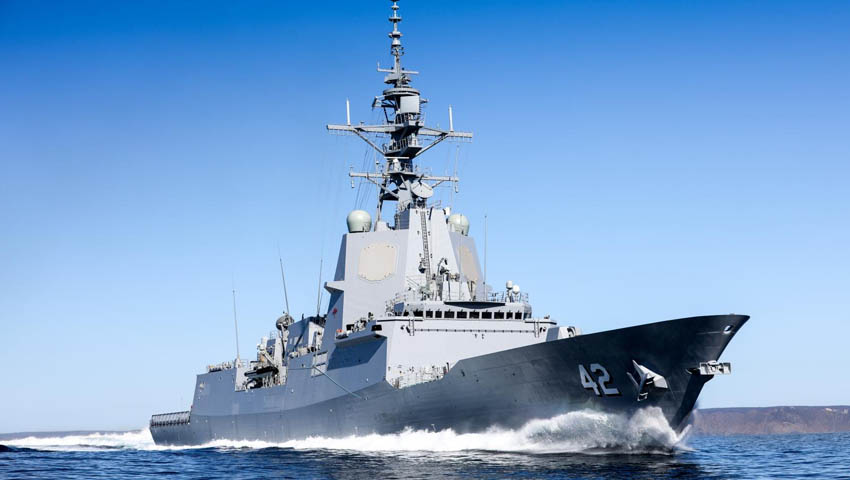Navantia Australia will play a central role in supporting the combat system upgrade of the Royal Australian Navy’s Hobart class guided missile destroyers as the fleet prepares to receive the Baseline 9 upgrade for the Aegis combat system.
To continue reading the rest of this article, please log in.
Create free account to get unlimited news articles and more!
SEA 4000 Phase 6 has been established to modernise the class to integrate Aegis Baseline 9 into the Royal Australian Navy's three Hobart Class guided missile destroyers (DDGs), HMA Ships Hobart, Brisbane and Sydney.
As the platform designer, Navantia Australia and parent company Navantia have an important role to play in supporting the combat system upgrade – fundamental to this support role for the major system upgrade is a thorough understanding of the platform design and operational capability, established from the original design architecture and specifications.
Gary Goetz, DDG design engineering manager, Navantia Australia, explained, "It is important to consider platform growth margins such as weight and weight distribution (that directly relates to ship stability, speed and range), electrical power supply and distribution, and heating and cooling capacity."
As the designer of the Hobart Class, Navantia has this thorough understanding. Supported with the design heritage for the Hobart Class, Navantia Australia has established a highly-skilled, sovereign capability in Australia that is uniquely positioned to support the Navy in the implementation of the Aegis Weapon System Baseline 9 upgrade into the DDGs.
Throughout the construction, delivery and sustainment phases of the DDGs, Navantia provided platform system design and integration services for the three ships of the class.
Over this time, 3D models of the platform and systems along with in-depth analysis and documentation of system interfaces and platform system integration have been developed and maintained – these provide a critical basis for implementing an upgrade in an efficient manner, and reducing technical and program risks.
Maintaining the role of the ship designer for the overall ship integration design assures a holistic view of design integrity through the consistent application of design intent, principles, standards and system specification for the whole of the ship through life.
Goetz added, "Navantia considers the principle of maintaining the ship design baseline is essential to maintaining design integrity through life and is uniquely positioned to undertake the responsibility to assure design integrity is preserved through a consistent application of design processes and design baseline data management."
In May 2020, Navantia Australia and the Department of Defence signed a strategic agreement, providing a framework to recognise Navantia as the platform system design agent for the Hobart Class – the strategic agreement underpins Navantia Australia’s commitment to the RAN in the provision of engineering services to the Hobart Class.
The three Hobart Class vessels, HMA Ships Hobart, Brisbane and Sydney, will primarily provide air defence for accompanying ships, in addition to land forces and infrastructure in coastal areas.
The Hobart Class’ Spanish counterparts entered service with the Spanish Navy beginning in the early 2000s, working alongside key NATO and US maritime assets.
When deployed to the Persian Gulf, the F100s became the first foreign Aegis-equipped ships to fully integrate into a US Navy Carrier Strike Group, while the class has also successfully deployed as the flagship of NATO’s Maritime Group Standing Reaction Force, highlighting the individual and interoperable capabilities of Navy’s new destroyers.
The vessels will be capable across the full spectrum of joint maritime operations, from area air defence and escort duties, right through to peacetime national tasking and diplomatic missions.
The Hobart Class combat system is built around the Aegis weapon system. Incorporating the state-of-the-art phased array radar, AN/SPY 1D(V), will provide an advanced air defence system capable of engaging enemy aircraft and missiles at ranges in excess of 150 kilometres.
While based upon the Spanish F100s, the Australian vessels incorporate a number of modifications and Australian-specific structural/design and combat system modifications to provide a uniquely Australian surface combatant with international provenance.

 Login
Login







